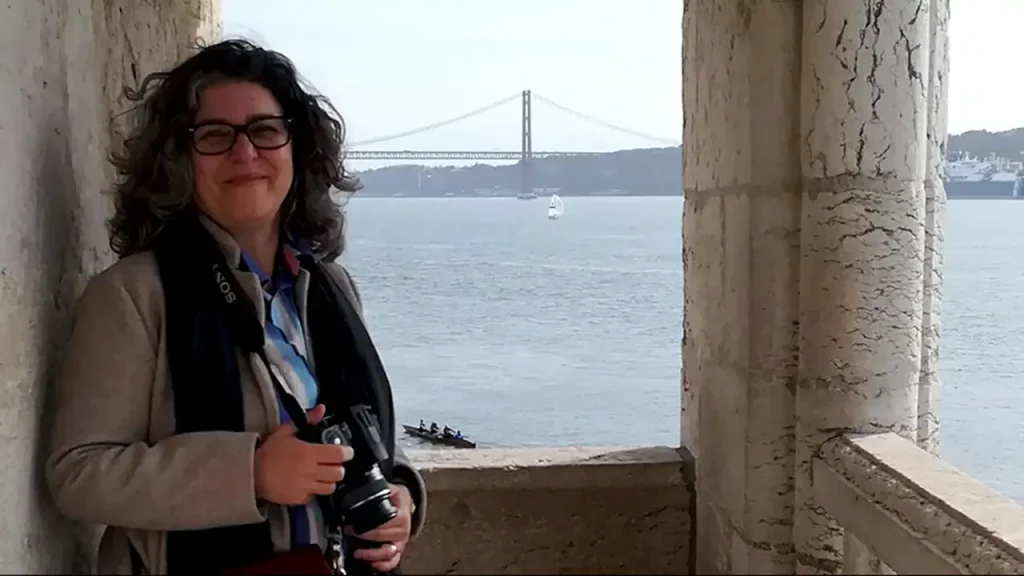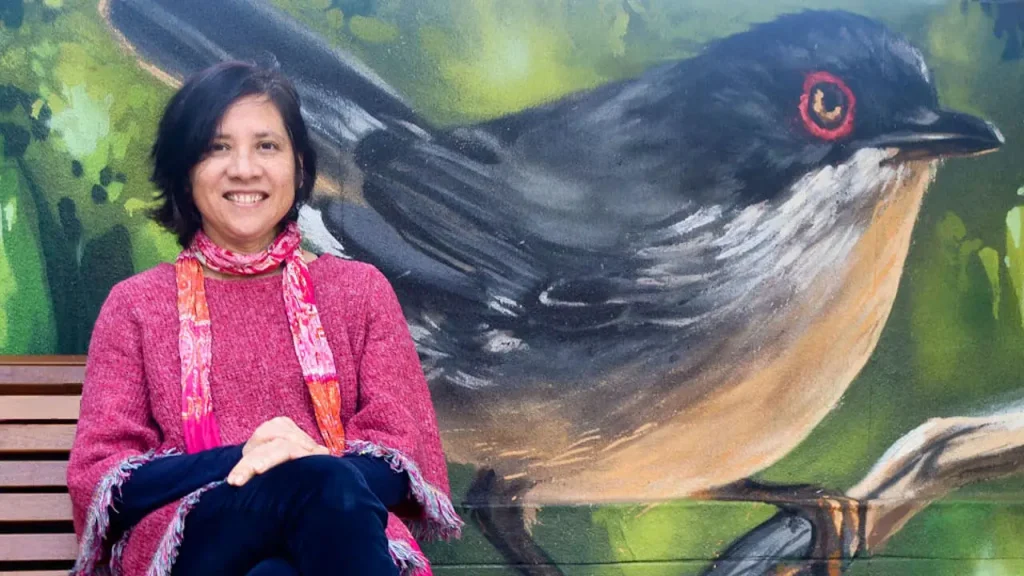In Lisbon in Us by Manuel Ortigão, we travel across generations through a practice as mundane as shaving and haircutting. This story touches on habits, trends, shops, accessories, and everyday experiences that offer countless insights into Lisbon, its people, and its neighbourhoods. A narrative that reveals far more than its title might suggest. Thank you for your testimony, Manuel!
A chat with the barber
I was born in Lisbon 67 years ago, and I’ve always lived here, except for the around 15 years that I was abroad. The first 25 years were spent in Roma Avenue, followed by Lumiar, Graça, Telheiras, and finally Avenidas Novas. In between, there was London on two occasions, Dublin, Asturias, Saudi Arabia, and many trips and extended stays in other places.
Throughout all these years, I’ve visited countless barbers or hairdressers, as I was never especially loyal to any one of them. I know many people who cross the city, braving traffic and parking issues, just to get their haircut at the barber they’ve been going to for 30 or 40 years, or more. They say they can’t imagine getting their hair cut anywhere else. I was never like that. On the contrary, I’ve always preferred to find someone close to where I live or, when it was the case, where I worked.
In Roma Avenue, I visited various establishments, most of which eventually closed down. This was in the 70s and 80s when haircuts fell out of fashion… Long hair was the trend! Later, when I had to wear a suit and tie, I frequented the more famous barber shops in the city: “Apolo 70,” “Gemini,” “Lord”…. When I lived in Graça, I had a single bad experience at a local barber, which I later realised was a front for what really mattered there: a kind of underground casino where various bets were placed.
About two years ago, I settled with Bruno, just around the corner from my house, and we’ve gotten along quite well, conversation included. We talk about Benfica football club, lately in an inevitable tone of lament, and other important matters like the neighbourhood’s little secrets, such as where to find the best pastéis de massa tenra (traditional Portuguese fried pastries with a soft, flaky dough and meat filling)!
One day, our conversation shifted to the topic of shaving. I explained to Bruno that when I worked, I shaved every day with an electric razor because it was more practical. But after I stopped working, I adopted the healthy habit of only shaving with foam and a blade every 3 or 4 days, depending on if I had a social event where I felt like showing up freshly shaven. I mentioned that only recently had I realised that using a traditional shaving brush and a good cream made for a much smoother and more pleasant shave than those foam sprays I used to rely on. I told him where I had bought the brush and cream — in “Barbex,” an old-fashioned shop in Figueira Square, on the third floor of a building with no elevator. There’s a wooden counter at the entrance, and from there you can see the vast array of products, mostly meant for professionals. Walking into that shop feels like stepping 50 years back into the city’s history.

Bruno then told me that the next step could be using a straight razor, though he didn’t recommend it, as it’s harder to handle and easily causes unintended cuts. He also shared some of his experiences as a barber, such as the gentleman who comes in twice a week and only leaves satisfied when his face is nearly flayed from the razor.
We talked about the old days that he only knows from hearsay, and when I was still a boy. Many men used to visit the barber daily to get a shave. Life in the city definitely had a different, slower pace. A trip to the barber marked the start of the day, accompanied by reading the newspaper, a coffee, a cigarette, and a chat about the day’s topics. Only then would they head to work.
On Roma Avenue, where there were surely half a dozen barber shops near our home, my father would still indulge in the small luxury of having the barber come to our home to provide his services. The day of Mr. Cerqueira’s visit was a special occasion, requiring preparation: we, his six children, were warned the day before, the wooden chair with its straw seat was strategically placed in the bathroom, surrounded by towels, and the sink filled with hot water. In the end, the maid would diligently sweep the floor.
From those times, the vivid memories endure, as does the very chair, which has survived all these decades and now holds a place of honour in my living room.

| Lisbon in Us by Manuel Ortigão | |
|---|---|
| Mini introduction | I was born and studied in Lisbon. I began my secondary education at Liceu Camões, which I completed at Liceu Padre António Vieira in 1975, during the height of the revolutionary era. These were unique and very exciting times. I graduated in Psychology in 1982 from the then newly established Faculty of Psychology at the University of Lisbon. My professional career was in Human Resources Management. I had the privilege of always working in international contexts, with many work trips included, and I also had the opportunity to live abroad for extended periods. This was a great complement to the joy of holiday travel. I keep myself entertained by writing little pieces about the trips I’ve taken and other subjects as well. During the 2021 lockdown, I wrote and published a book that I titled “Recordar, Reviajar” (“Remembering, Revisiting”). It was a fun experience. I love jazz, which I’ve been listening to for many years, and I’m also a big fan of golf, which I regularly play at Aroeira and Tróia. I take advantage of car trips to listen to my favourite playlists. Walking around Lisbon is another one of my greatest pleasures, greatly enhanced by the excellent climate we enjoy and the wonderful light that bathes this city. A few years ago, I read an article in The Economist that argued that the three best cities in the world to live in were: Chicago, Zurich, and… Lisbon. It’s as valid as many other opinions of the sort, but we have no doubt that Lisbon is always at the top of these rankings, and we know exactly why! Contact email address: [email protected] |
| An inspiring place | The Senhora do Monte viewpoint in Graça offers some of the best views over Lisbon. I lived on Rua da Senhora do Monte about 30 years ago, when the viewpoint was not yet part of tourist routes and there were no “tuk-tuks” lining up to climb this street, as they do today. |
| An unmissable visit | The Palácio Pimenta – Museu de Lisboa in Campo Grande is a must-visit. There, among other things, you’ll find a scale model of the city before the 1755 earthquake, where, on a hill, you can spot the small, isolated chapel of Senhora do Monte at the aforementioned viewpoint. |
| His mouth waters with… | A grilled sea bass paired with an Arinto from Bucelas, octopus “à lagareiro” with an Encruzado from Dão, or Serra cheese and Port wine. Of course, good company is essential. But this list could go on and on… |
| A song… | Portuguese and related to Lisbon: “Fado Bailado” by Rão Kyao and “Foi por ela” by Fausto. |
| Never miss another article | Subscribe here |
The project getLISBON has been very rewarding and we want to continue revealing the singularities of fascinating Lisbon.
Help us keep this project alive!
By using these links to make your reservations you’ll be supporting us. With no extra costs!
• Looking for a different experience? We can create a customised itinerary based on your interests. Contact us!
• Or if you prefer tours and other activities in various destinations, take a look at GetYourGuide.
• Save time and money with a flexible Lisbon Card!




